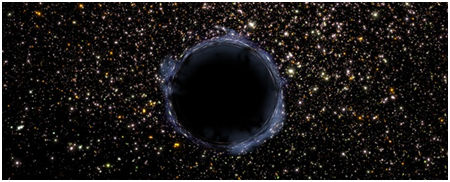PREVIOUS
Primordial Black Holes (PBH)
April 16 , 2020
2087 days
1205
0
- A recent study on Primordial black holes has confirmed that the marginal rise in potential energy resulted in birth of several PBHs and also emitted very powerful gravitational waves.
- Primordial Black Holes (PBH) were formed during the Hot Big Bang phase.
- PBH can be massively large as 3000 kms or be extremely tiny like nucleus of an atom.
- It is believed that they are formed as a result of collapsing radiations as opposed to the collapse of massive stars, which is the case of any other black holes.
- Primordial black holes were born as a result of a tiny bump in the potential energy levels of the universe, at a time when it was expanding rapidly.
- After big bang the universe had expanded to nearly 10^27 times its original size.
- It occurred within just fraction of a second by the time Cosmic Inflation phase concluded.
- Thereafter, the remnant energy possessed by gravitational force got converted mainly into photons (light) in addition to protons, electrons, neutrons and other particles.
- As the universe continued to grow exponentially during the Cosmic Inflation phase, it was sent across tiny quantum jitters.
- These fluctuations, released in a specific fashion, when sufficiently large, slowly give birth to galaxies and stars and there is a bump in energy.
- Among those that were significantly large, helped form PBHs.
- The bump in energy then produces PBHs besides triggering very strong gravitational waves.

Leave a Reply
Your Comment is awaiting moderation.


